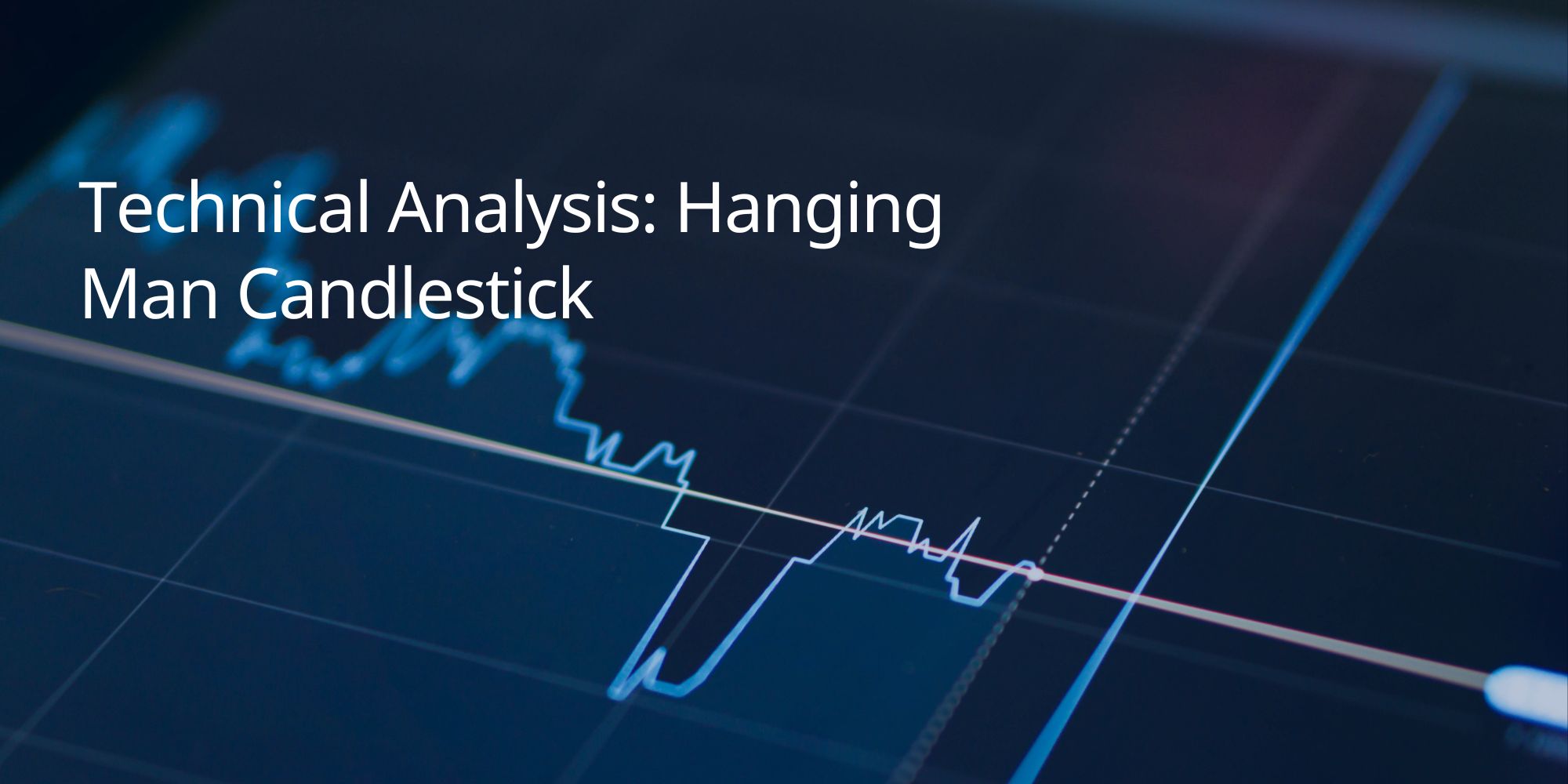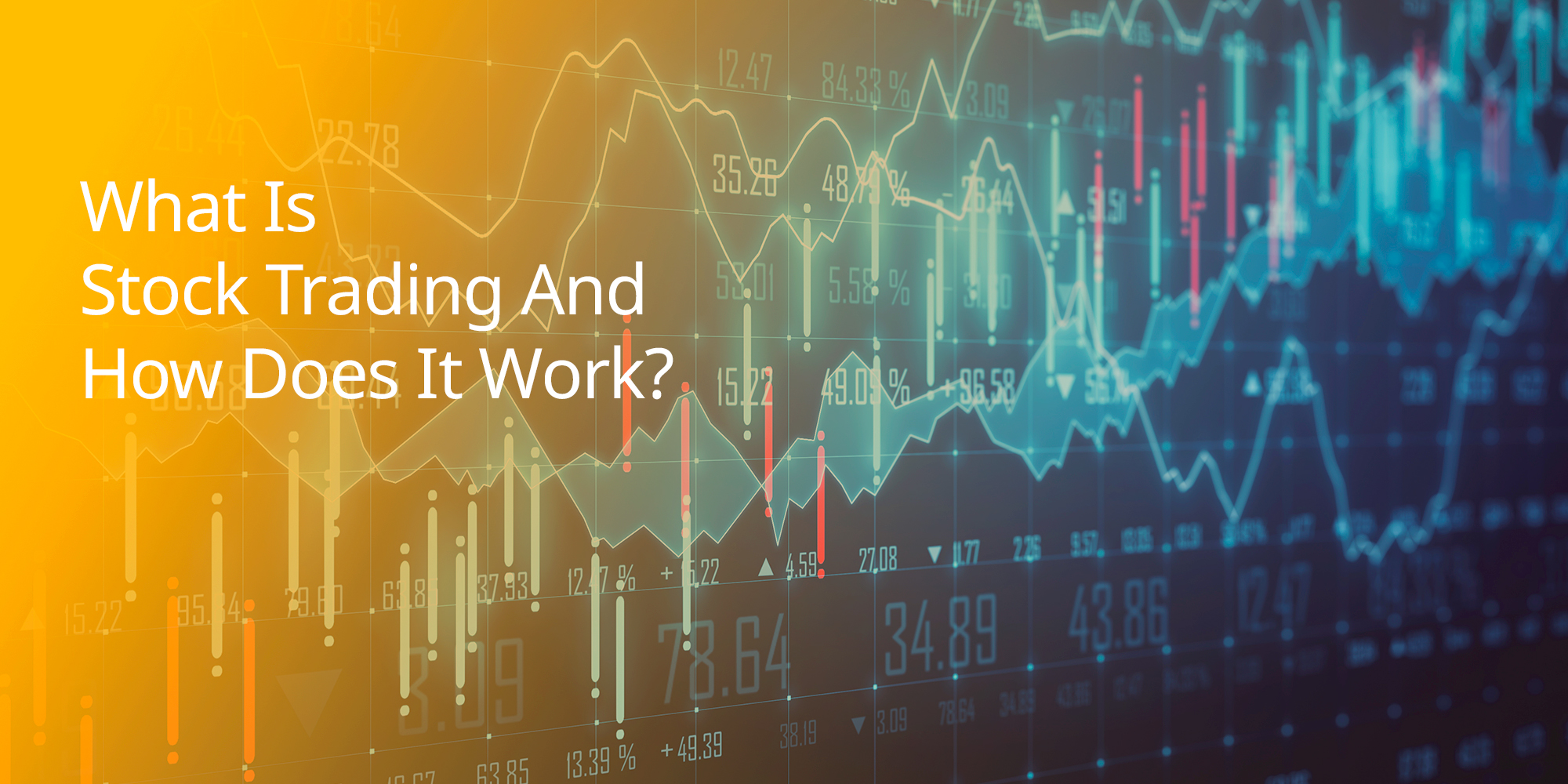The Hanging Man candlestick pattern is a powerful tool in technical analysis, often serving as an early warning sign of a potential trend reversal. Typically appearing at the end of an uptrend, this pattern hints at weakening bullish momentum and rising selling pressure. While it may look simple at first glance, understanding its structure, context, and confirmation signals can give traders a valuable edge. In this article, PlexyTrade breaks down how the Hanging Man pattern works, when to trust it, and how to use it to refine your trading strategy.
What Does a Hanging Man Candlestick Indicate?
The Hanging Man candlestick is a potential warning sign of an upcoming shift from a bullish trend to a bearish one. Typically forming after a sustained upward price movement, this pattern is visually defined by a small real body positioned near the top of the price range and a long lower shadow. The small body reflects a minimal difference between the open and close prices, while the extended lower wick indicates that sellers briefly took control before buyers pushed the price back up.
This momentary dominance by sellers, despite the bullish close, hints at market weakness and growing uncertainty, setting the stage for a potential reversal in sentiment.
How is a Hanging Man candlestick formed?
The Hanging Man candlestick stands out due to its specific structure. Found during an uptrend, it displays a small real body near the top of the candle and a long lower shadow—often at least double the body’s size. This shape reflects a session in which sellers initially drove prices down sharply, only for buyers to recover most of the loss before the close.
The lack of an upper shadow or wick often makes this pattern even more recognisable. However, its real strength lies in the follow-up. If subsequent trading sessions close below the body of the Hanging Man, this adds confirmation to the pattern’s bearish implications.
Additionally, if the pattern forms with increased trading volume, it signals heightened market activity and lends further weight to the potential reversal. At PlexyTrade, we highlight how integrating such chart signals with broader technical tools can help traders develop sharper market entry and exit strategies.
When does the Hanging Man candlestick occur?
The Hanging Man candlestick typically emerges after a consistent upward trend, acting as a possible indicator of a market top or trend exhaustion. Traders pay close attention to this formation when prices have been climbing steadily. The candlestick’s appearance—with its small body high in the price range and an extended lower shadow—implies that while buyers managed to reclaim ground during the session, the bears made their presence known.
This candle reveals a crack in bullish momentum and often prompts traders to monitor closely for signs of trend reversal. Confirming the pattern with subsequent bearish candles and other indicators is key to using it effectively within your strategy.
How to Identify the Hanging Man Candlestick Pattern in Technical Analysis?
Accurately spotting a Hanging Man candlestick is vital for traders aiming to anticipate potential reversals. This pattern generally develops during an uptrend and stands out due to its structure.
To begin, focus on the candlestick’s formation: it should have a small real body near the top of the price range and a long lower wick that is at least twice the length of the body. Any upper wick is usually short or completely absent, helping differentiate it from similar formations.
However, the pattern only holds significance if it forms during an established bullish trend. Its placement within the trend is essential—it suggests that although buyers pushed the price up, sellers were able to exert notable pressure during the session. This creates a signal of potential exhaustion in upward momentum.
While the candle’s colour may vary, a red (bearish) Hanging Man often carries greater weight, hinting at stronger reversal potential compared to a green one. Once the pattern is identified, traders should look for confirmation. A close below the Hanging Man’s body in the following sessions provides stronger evidence of a possible downtrend.
At PlexyTrade, we encourage our users to evaluate such signals within broader price action and trend context, enhancing accuracy in pattern recognition.
How to trade using the Hanging Man candlestick in the stock market?
Trading with the Hanging Man candlestick involves more than simply identifying the pattern—it requires disciplined confirmation and strategic planning. Once the Hanging Man appears after an uptrend, the next step is to wait for validation. A bearish confirmation occurs when the following session closes below the Hanging Man’s real body, suggesting a weakening of buyer control.
Once confirmed, traders often consider entering short positions to take advantage of the potential downturn. Risk management is key: setting a stop-loss slightly above the high of the Hanging Man candle helps protect against false signals or sudden bullish recoveries. For example, if the high was $48, a stop-loss at $49 provides a safety buffer.
Volume is another important factor. A Hanging Man formed on high volume typically suggests stronger conviction behind the price action, whereas lower volume may warrant additional confirmation.
At PlexyTrade, we recommend combining this pattern with technical indicators such as the RSI, MACD, or moving averages. These tools add depth to your analysis and support more confident decision-making.
It’s also wise to stay informed about wider market influences—macroeconomic reports, earnings releases, or global events could impact the trend regardless of technical signals. Integrating such data points ensures your strategy remains grounded in both technical and fundamental perspectives.
What are the advantages of using the Hanging Man candlestick pattern?
The Hanging Man candlestick pattern offers several valuable benefits for traders, particularly in anticipating potential bearish reversals during bullish market conditions.
- One of the key advantages is its early warning function. Spotting a Hanging Man near the top of an uptrend allows traders to prepare for a possible shift in momentum—either by exiting long positions or considering short entries. This can improve trade timing and reduce exposure to downside risk.
- Additionally, the pattern offers clarity in decision-making. When paired with confirmation signals—such as a bearish close in the following session—traders can act with greater confidence. For instance, if the market closes below the Hanging Man’s body the next day, it strengthens the case for a bearish move.
- Moreover, incorporating the Hanging Man into broader technical strategies enhances overall analysis. Used alongside indicators like RSI or MACD, it becomes a useful piece in a trader’s toolkit for spotting market shifts and managing risk effectively.
At PlexyTrade, we highlight patterns like the Hanging Man not just as isolated signals, but as part of a complete trading strategy that includes validation, risk controls, and market context.
What are the limitations of the Hanging Man candlestick pattern?
While the Hanging Man candlestick can be a helpful signal for identifying potential trend reversals, it’s not without limitations.
- One of the most significant drawbacks is its dependence on trend context. For the pattern to hold predictive value, it must appear after a well-defined uptrend. If the market has not established clear bullish momentum beforehand, the pattern’s reliability significantly weakens.
- Another issue is that the Hanging Man pattern, on its own, doesn’t guarantee a trend reversal. Relying solely on the formation without waiting for confirmation through subsequent bearish price action could lead to premature entries. This can result in false signals, especially in volatile markets.
- Additionally, external events—such as unexpected economic reports or political developments—can easily disrupt the expected market behaviour, nullifying the pattern. To improve reliability, it’s essential to combine this candlestick with other technical tools such as RSI or moving averages, which are all part of the analytical features available on PlexyTrade’s platform.
At PlexyTrade, we encourage traders to use the Hanging Man as part of a broader strategy, not in isolation. Cross-verifying patterns with volume, confirmation candles, and momentum indicators leads to more consistent results.
What are some alternative candlestick patterns to the Hanging Man?
Candlestick patterns offer a wide range of insights into trader sentiment and potential price movements. While the Hanging Man is useful for spotting possible bearish reversals, there are many other patterns worth incorporating into your analysis strategy.
- Doji: A Doji forms when the opening and closing prices are nearly the same, reflecting market indecision. Depending on its position and shadow length, it can signal reversals. For example, a Gravestone Doji at the top of an uptrend may indicate an upcoming downturn, while a Dragonfly Doji at the bottom of a downtrend could point to a potential rise.
- Hammer: Similar in appearance to the Hanging Man but appearing after a downtrend, the Hammer suggests a bullish reversal. Its long lower shadow reflects significant intraday selling that was overcome by buyers. Confirmation comes when the next candle closes above the Hammer’s body.
- Inverted Hammer: Also a bullish reversal pattern, this one has a small real body and a long upper shadow, showing an early buying attempt after a downtrend. Confirmation is crucial—traders look for a bullish close in the next session.
- Shooting Star: Appearing after an uptrend, the Shooting Star features a small real body and a long upper shadow, suggesting a possible bearish reversal. It’s more reliable when the following candle closes below its body.
- Engulfing Patterns: These are two-candle formations. A Bullish Engulfing pattern features a small red candle followed by a larger green one that fully engulfs it—indicating a potential reversal from a downtrend. A Bearish Engulfing is the opposite, signalling a shift from bullish to bearish sentiment.
- Morning Star and Evening Star: These are three-candle reversal patterns. A Morning Star indicates a potential bullish reversal after a downtrend, while an Evening Star often marks a bearish reversal at the end of an uptrend.
These patterns—like the Hanging Man—can be analysed in more depth using PlexyTrade’s charting tools, allowing traders to cross-reference multiple signals before acting.
Does the Color of the Hanging Man Matter?
Yes, the colour of the Hanging Man candlestick provides valuable insight into market dynamics and adds depth to the analysis.
- A red (or black) Hanging Man, where the closing price is lower than the opening price, suggests stronger selling pressure during the trading session. This is typically seen as a more powerful bearish signal.
- A green (or white) Hanging Man, where the price closes higher than it opened, still indicates potential weakness, but the bullish close shows that buyers maintained some control, making the reversal signal slightly less potent.
In either case, the key feature is the long lower wick, but the colour gives added context. For instance, a red Hanging Man followed by a bearish candle closing below its body offers a higher-probability reversal.
At PlexyTrade, traders can customise their chart colours and easily visualise these subtle differences, helping them make faster and more informed decisions.
When is the optimal time to trade using the Hanging Man candlestick pattern?
Successfully trading the Hanging Man pattern depends heavily on timing and context. Traders aiming to maximise the effectiveness of this signal should look for a combination of technical and psychological indicators that strengthen the bearish reversal narrative.
1. Following a consolidation phase
If a Hanging Man appears after a sideways movement within an uptrend, it may mark the beginning of a bearish shift. Consolidation often reflects indecision or fatigue among buyers. When followed by a Hanging Man—especially one supported by high volume—it enhances the likelihood of a breakdown.
2. Waiting for confirmation
Jumping into a trade immediately after spotting a Hanging Man carries risk. The most prudent strategy involves waiting for confirmation, usually in the form of a bearish candle closing below the Hanging Man’s body. This follow-through move verifies that sellers are taking control, aligning with PlexyTrade’s risk-aware approach to trading setups.
3. Aligning with market sentiment
The broader market environment also plays a role. In overly optimistic or euphoric phases, Hanging Man signals may be ignored or short-lived. In contrast, during periods of caution or weakening bullish momentum, the same pattern could trigger sharper reversals. PlexyTrade’s sentiment tools and market news integrations can support this analysis.
4. Appearing near resistance zones
If the Hanging Man pattern forms close to a key resistance level, its reliability improves significantly. These zones often act as ceilings for price action, and the appearance of bearish reversal signals like the Hanging Man adds further weight to a potential pullback.
5. Backed by technical indicators
Combining the Hanging Man with other technical indicators can fine-tune entry timing. For instance, if the RSI shows a bearish divergence at the same time the Hanging Man forms, it reinforces the pattern’s bearish implications. This multi-layered confirmation is encouraged on the PlexyTrade platform for all advanced traders.
6. Around economic announcements
Major economic events—such as interest rate decisions or inflation data—can invalidate or accelerate pattern-based setups. If a Hanging Man forms just before a significant news release, traders should approach with caution. These external catalysts often disrupt technical signals unless confirmation follows after the news event.
Conclusion
The Hanging Man candlestick pattern provides traders with a useful signal to anticipate potential market reversals after an uptrend. However, like all technical tools, its effectiveness increases when used within the right context and alongside confirmation indicators. By recognising this pattern near resistance levels, validating it with follow-up price action, and aligning it with broader market sentiment, traders can strengthen their decision-making. At PlexyTrade, we believe in equipping traders with the knowledge to interpret candlestick signals confidently and integrate them into a broader, data-informed strategy.















